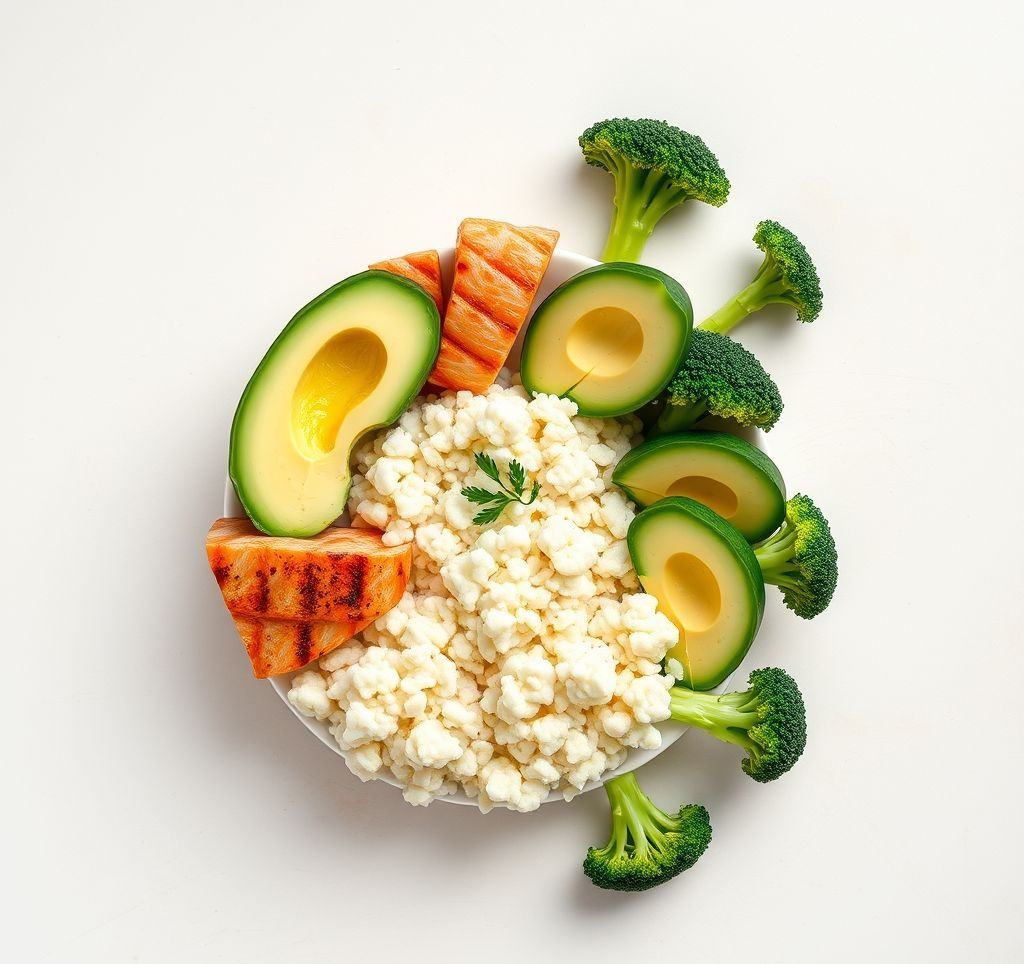Feeling overwhelmed by the low-carb diet? Forget complicated recipes and endless calorie counting. Building delicious and satisfying low carb meals doesn’t have to be a struggle. This guide provides a simple, effective formula for creating balanced low carb meals every time, plus ten easy examples to inspire your culinary journey.
Why Mastering Low Carb Meals is Crucial for Success
Adopting a low carb lifestyle comes with numerous potential benefits. Understanding how to construct a balanced low carb meal is key to realizing these advantages:
- Sustainable Energy Levels: Proper ratios of protein, fat, and fiber help regulate blood sugar levels, avoiding energy crashes.
- Increased Satiety: Feeling full and satisfied after meals reduces cravings and helps with weight management.
- Nutrient Density: Focusing on whole, unprocessed foods ensures you get the vitamins and minerals your body needs.
- Improved Metabolic Health: Low carb diets can support healthy insulin levels and overall metabolic function.
- Simplified Meal Planning: A simple formula makes meal planning quick, easy, and stress-free.
The Core Formula: Protein + Healthy Fat + Fiber
The foundation of a balanced low carb meal is simple: combine a source of protein, a source of healthy fat, and a source of fiber. Aim for roughly equal proportions of each on your plate. This combination provides sustained energy, promotes satiety, and delivers essential nutrients.
- Protein: Choose lean protein sources like chicken breast, fish, turkey, eggs, tofu, or tempeh.
- Healthy Fat: Opt for unsaturated fats from sources like avocados, olive oil, nuts, seeds, and fatty fish (salmon, mackerel).
- Fiber: Include non-starchy vegetables such as leafy greens, broccoli, cauliflower, peppers, and zucchini.
10 Easy Low Carb Meal Examples
Here are ten examples of balanced low carb meals using our simple formula:
- Salmon with Asparagus and Avocado: Grilled salmon (protein), roasted asparagus (fiber), and sliced avocado (healthy fat).
- Chicken Salad Lettuce Wraps: Shredded chicken mixed with mayonnaise (healthy fat), celery, and herbs served in crisp lettuce cups (fiber).
- Ground Turkey and Cauliflower Rice Bowl: Seasoned ground turkey (protein) served over cauliflower rice (fiber) with a drizzle of olive oil (healthy fat).
- Egg Salad with Celery Sticks: Hard-boiled eggs mixed with mayonnaise (healthy fat), mustard, and celery salt, served with celery sticks (fiber).
- Steak with Green Beans and Butter: Grilled steak (protein), steamed green beans (fiber), and a pat of butter (healthy fat).
- Shrimp Scampi with Zucchini Noodles: Sautéed shrimp (protein) in garlic butter sauce (healthy fat) served over zucchini noodles (fiber).
- Tofu Stir-Fry with Broccoli and Almonds: Cubed tofu (protein) stir-fried with broccoli (fiber), soy sauce, and slivered almonds (healthy fat).
- Tuna Salad Stuffed Bell Peppers: Tuna salad made with mayonnaise (healthy fat), celery, and onions, stuffed into bell pepper halves (fiber).
- Pork Chops with Brussels Sprouts and Olive Oil: Pan-fried pork chops (protein), roasted Brussels sprouts (fiber), and a drizzle of olive oil (healthy fat).
- Chicken Thighs with Spinach and Macadamia Nuts: Baked chicken thighs (protein), sautéed spinach (fiber), and a sprinkle of macadamia nuts (healthy fat).
Expert Tips & Best Practices for Your Low Carb Plate
To optimize your low carb meal planning and maximize the benefits, consider these expert tips:
- Portion Control: While the formula provides structure, be mindful of portion sizes to manage calorie intake.
- Seasoning is Key: Experiment with herbs, spices, and flavorful sauces to keep your meals exciting. Avoid sugary sauces.
- Variety is the Spice of Life: Rotate your protein, fat, and fiber sources to ensure a diverse intake of nutrients.
- Prep Ahead: Cooking components in advance (e.g., roasting vegetables, grilling chicken) saves time during the week.
- Read Labels Carefully: Be aware of hidden carbs in processed foods like sauces and dressings.
As Dr. Eric Westman, a leading researcher in low-carbohydrate diets, has stated:
“When you cut carbohydrates, you automatically reduce caloric intake, and you don’t have to be hungry.”
This highlights the importance of satiety when embarking on a low-carb journey – a direct benefit of following the ‘protein + healthy fat + fiber’ formula.
According to a study published in the American Journal of Clinical Nutrition, low-carbohydrate diets can be effective for weight loss and improving metabolic health biomarkers. Building balanced low carb meals that prioritize quality ingredients and proper ratios is crucial for long-term success.



















